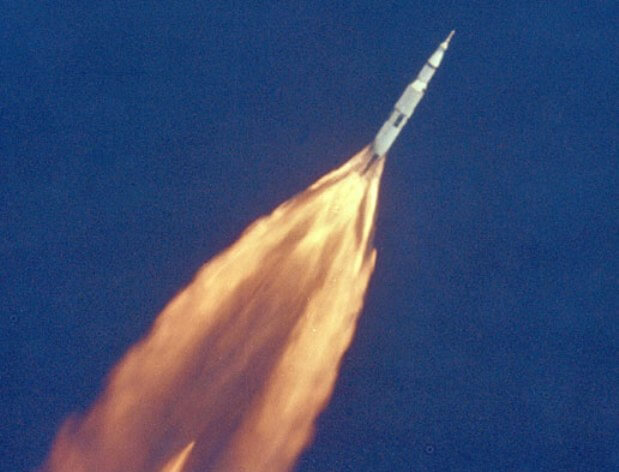According to Jeff Bezos, the operation will be done with his own money, and in any case, NASA will decide where to display the engines. However, if he uses more than one engine, he requests that the second engine be displayed at the Seattle Aviation Museum

Amazon founder Jeff Bezos has located the F-1 engines that were used as the first stage engine of the Saturn launcher at the bottom of the Atlantic Ocean and he intends to use them.
"I am pleased to report that, using the most advanced underwater sonar available, the team has discovered the Apollo 11 engines lying nearly 4,300 feet below the surface of the water and we plan to try and raise one or more of them from the ocean floor. Says Bezos On the site of the search expedition.
"We don't know yet what condition the engines might be in - they hit the ocean at high speed and have been in salt water for over 40 years since then. On the other hand, they are built of tough materials, so we just have to wait and see.
Bezos said that about a year ago he thought about the Apollo 11 mission from 1969 and wondered where the F-1 engines that started the historic journey to the moon could be found.
In the first stage of the Saturn 5 rocket, five F-1 engines were assembled. This model is still the most powerful single-chamber liquid-propellant rocket engine ever developed, and it delivered a quarter of a million kilograms of thrust, burning 2,700 kilograms of rocket-grade kerosene and liquid oxygen every second.
On July 16, 1969, Apollo 11 was launched and the five engines burned for a few minutes before being thrown back toward Earth and landing in the Atlantic Ocean.
Although the engines remain the property of NASA, Bezos hopes that the agency will allow them to be removed for display at the Smithsonian or any other museum.
"If we manage to remove more than one engine, I asked NASA to consider moving it to the Aviation Museum in Seattle." Bezos said and added that "NASA is one of the few institutions I know that can inspire five-year-old children." She inspired me, and through this operation, we may be able to inspire a few more children to invent and explore.”
Bezos indicated that no public money would be used to raise and restore the engines, and he would fund the entire cost. He also promised that he would update the website surfers about the progress of the operation.

6 תגובות
The Saturn engines are just an example of the private takeover of history. Here are more examples:
Does the Titanic belong to Ballard? Should the antiquities dug up by General Moshe Dayan be left in the hands of his family members? Maybe we will fill the book hall and take out the stored scrolls?
Just as Israel renovated the armored personnel carriers at Shaar HaGai as a historical national monument, and the monument to Rabin's assassination at the foot of the same steps in Tel Aviv was donated by a private person - a Jew from Germany - so will the Americans do it for themselves, well done and I would be happy to buy a ticket to the Smithsonian Museum to see.
It is not clear why Boaz Drori was arrested specifically for the matter of the Saturn engines for the purpose of his criticism - which is correct in itself. Indeed, before us is a megalomaniacal operation without any real value, but it is better that Amazon's money goes out in this positive way than financing "historical reenactments - the style of the movie Troy" or much worse things in the style of oil drilling in the Gulf of Mexico At the same time, it is possible that during the course of the project, operation and rescue techniques from the depths of the ocean will be developed and learned, and then we certainly have a very positive project in front of us, although the engines of the specific missile do not have much significance.
A good example of a dangerous situation, where private individuals and private companies reach profits equivalent to the GDP of a medium-sized country. A bit reminiscent of the American government's concern about the blue giant IBM in the seventies. Definitely fits the federal demand in the US to break up Microsoft into small companies.
This is about the possibility of using the assets intended for the general oleusia by a single, private and wealthy person.
They have historical value.
Why try so hard to get the old engines out of the sea?